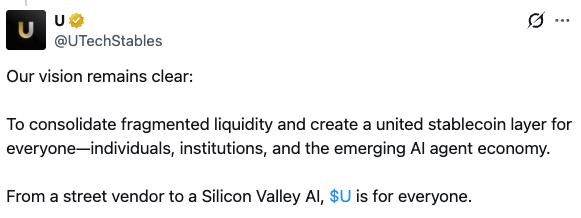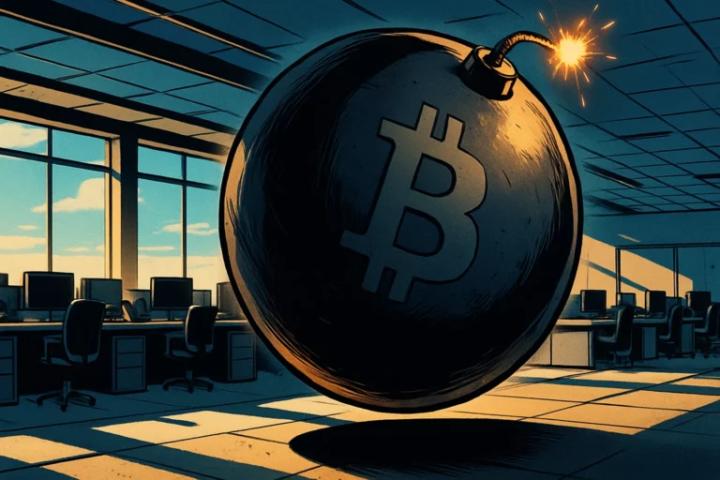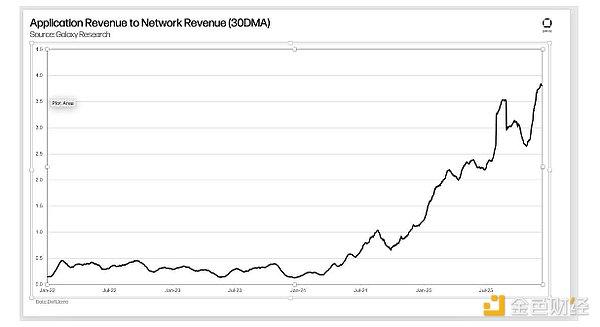I believe meme coins are beneficial to society. Even within the cryptocurrency space, this is a controversial position. Many believe that meme coins distract from the technological innovation at the heart of cryptocurrencies, with some claiming that they are inherently worthless.
Overall, I think meme coins are good because they reflect society's commitment to upholding digital property rights through free and open markets. Meme coins are one of the purest expressions of citizens exercising their freedom to transact, and people do not need to justify legal purchases and sales; their preferences should be the arbiters of economic decisions, highlighting the principles of individual autonomy and market freedom. In contrast, in most markets (except perhaps those where the national interest is overwhelming), regulators or legislators do not need to decide what can or should be bought and sold. Restricting the meme currency market based on personal preferences is opposed to the free market more generally. To restrict the meme currency market based on personal preference is to oppose the free market more generally.
While the above argument holds true regardless of whether meme coins have intrinsic value, the assumption that meme coins are fundamentally worthless is increasingly untenable. An intuitive indicator is the market price. For example, Dogecoin's lowest market capitalization during the 22-year bear market was $7.7 billion.
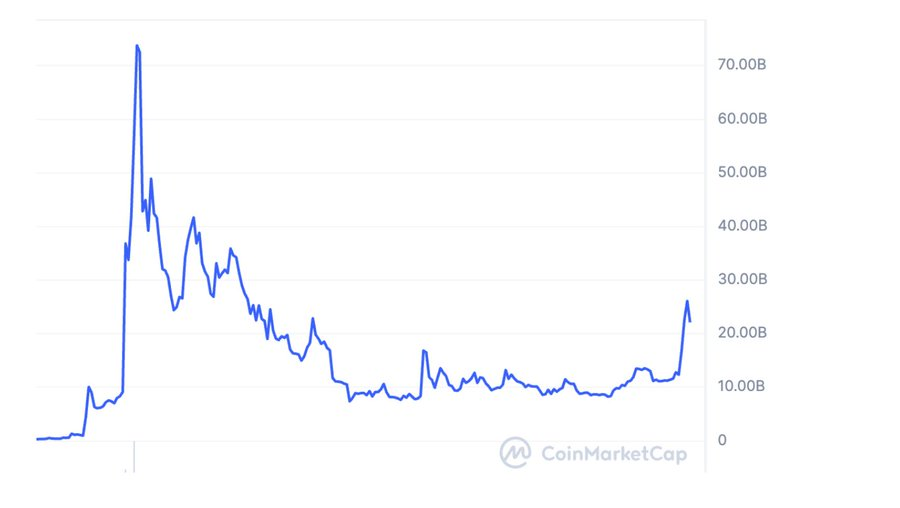
DOGE from 2020 to present
That would make DOGE's market capitalization similar to that of News Corporation (the parent company of FOX News and a company in the S&P 500) at the same time, which had a market capitalization of $9.1 billion. Even during times of cryptocurrency decline and high interest rates, the market continues to reflect significant value for DOGE.
There are many explanations for this, ranging from skepticism to ideology. Skeptics may assert that those holding large amounts of DOGE have an incentive to prevent the price from falling to a certain extent and therefore support the price with further purchases. Cryptocurrency ideologues may argue that all currencies, including the U.S. dollar, are meme coins because their value is derived from social conventions, which are a parody or meme. (As economist Paul Krugman once said, fiat currencies are backed by “men with guns,” making meme coins seem more benign than their alternatives.)
I think both explanations are correct to varying degrees, and there is a third explanation: Meme coins are primarily a cultural phenomenon, not a financial one. They are channels for people to use new technologies to express collective humor, dissent or camaraderie. Through meme coins, people form communities around shared jokes, cultural moments, or sociopolitical sentiments, allowing them to participate in a form of digital expression that transcends traditional financial mechanisms. Meme coins become symbols of a shared identity or cause, and their value comes not only from market dynamics but also from the popularity of the values reflected in the meme coins.
It's easy to dismiss such activity as "financial nihilism": as Joe Weisenthal writes below, it's a profound distrust of the existing system and a desire to dismantle it by exposing its absurdity:
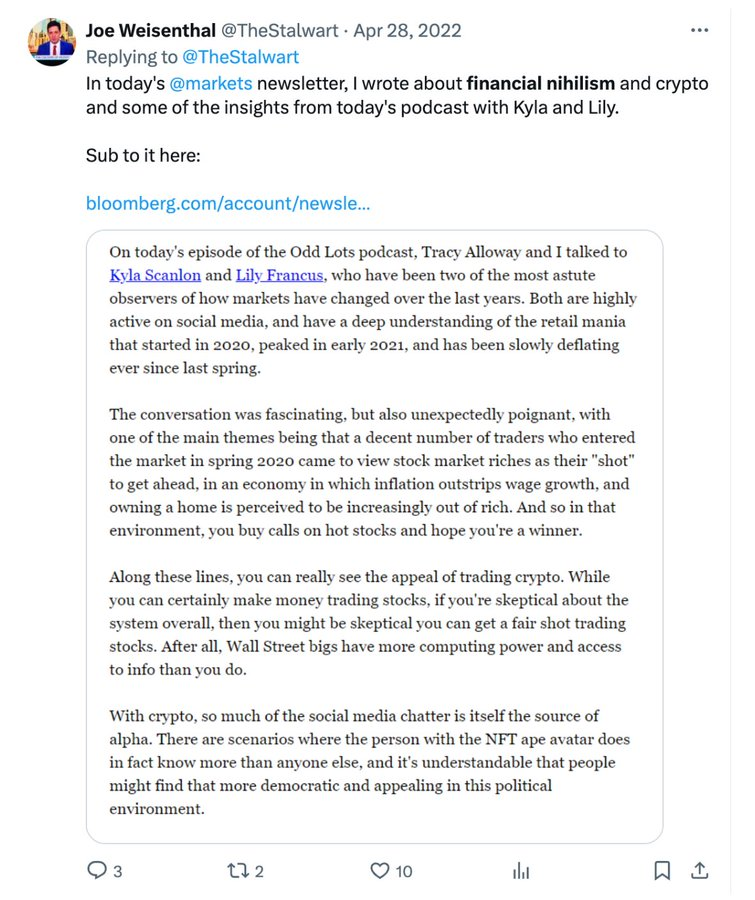
In fact, some part of the reason for meme coin activity may well be driven by financial nihilism. The sentiment reflects a broader trend of pessimism, fueled by inflation, uncompetitive wages, unaffordable housing, unsustainable sovereign debt and political polarization.
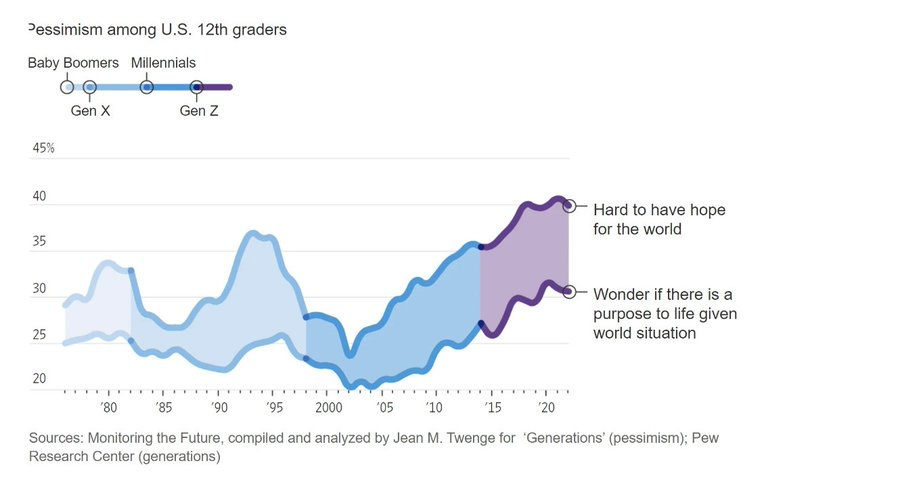
However, things get interesting when one attempts to censor or dismiss financial nihilism as a philosophical perspective. The so-called “laws” of finance are neither inviolable nor inherently moral; in fact, they are not even consistently observed. It was not until the 1950s that investment banks used the discounted cash flow model as a company valuation method based on the research results of scholars such as Fisher, Modigliani and Miller. Similarly, the concept of "risk-free interest rate" is also a product of the capital asset pricing model invented by Traynor et al. in 1962, less than 70 years ago. These relatively new concepts can hardly be called moral principles; they are simply theories with varying predictive validity. So why is it that questioning of traditional systems is often framed as a moral failing rather than a critical inquiry into its validity?
One answer is that those with a vested interest in the current system, particularly those working in traditional finance and the regulatory agencies that surround it, want to maintain it. In order to do this, they need to negate any system that challenges it, including cryptocurrencies and meme coins. A blanket rejection of financial nihilism demonstrates a bias against maintaining the current financial order without regard to the existence of any alternatives.
Another answer is that people think meme coins are rife with fraud and scams, and no doubt there is some truth to this. Meme coin proponents should demand honesty and transparency from their communities as rigorously as they demand price increases. I suspect many of the most prominent voices against meme coins are people who have been scammed out of their money in some way, and I sympathize with them. Those who commit fraud should be held accountable by their communities or the state.
Some scams are meme coins, but not all meme coins are scams. At this point, I will disclose my meme coin holdings. This is in no way financial advice and any of these meme coins could go to zero. Rather, it is an expression of my personal cultural sentiments and my commitment to transparency:
- MOCHI : The cutest cat on a chain. I believe cuteness is a universal value that transcends cultures and unites people, and I also love cats.
- TOSHI : Currently the most valuable cat on the chain.
- JENSEN : A community modeled after the CEO of NVIDIA.
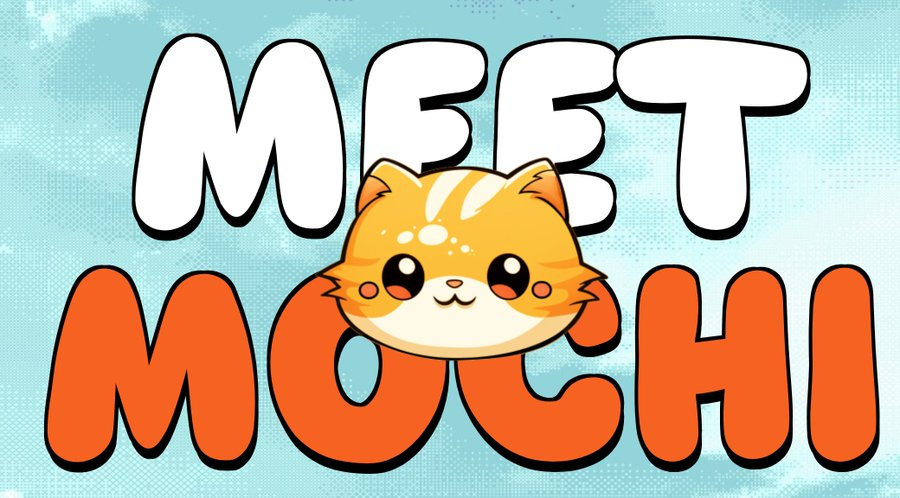
I recently tweeted this: "Structurally, meme coins are not that different from Social Security." This sentence may read a bit teasing, but the two have unexpected similarities. :
- Community-based value : Both meme coins and social security require collective belief. The value of meme coins comes from community consensus, similar to the effectiveness of social security rooted in social commitment.
- Redistribution mechanism : Meme coins and social security both redistribute wealth. Meme coins redistribute wealth among investors, and Social Security transfers income from the current workforce to retirees.
- Dependence on New Participants : The sustainability of meme coins depends on attracting new investors, similar to how Social Security needs to continue attracting contributions from the working population to pay retiree benefits. The difference is that Social Security is at risk of bankruptcy.
As a form of cultural expression, meme coins take time to earn people's trust, especially in an industry wedded to decades of dogma about what value is. But even without this, meme coins have social value because they are an important litmus test of financial freedom. Fraud should be eradicated and people should have the right to transact using any medium, including meme coins.




